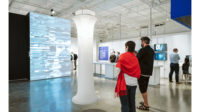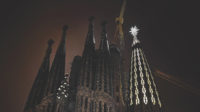With Large-Scale Interventions, Coachella Artists Imagine New Architectural Dreamscapes

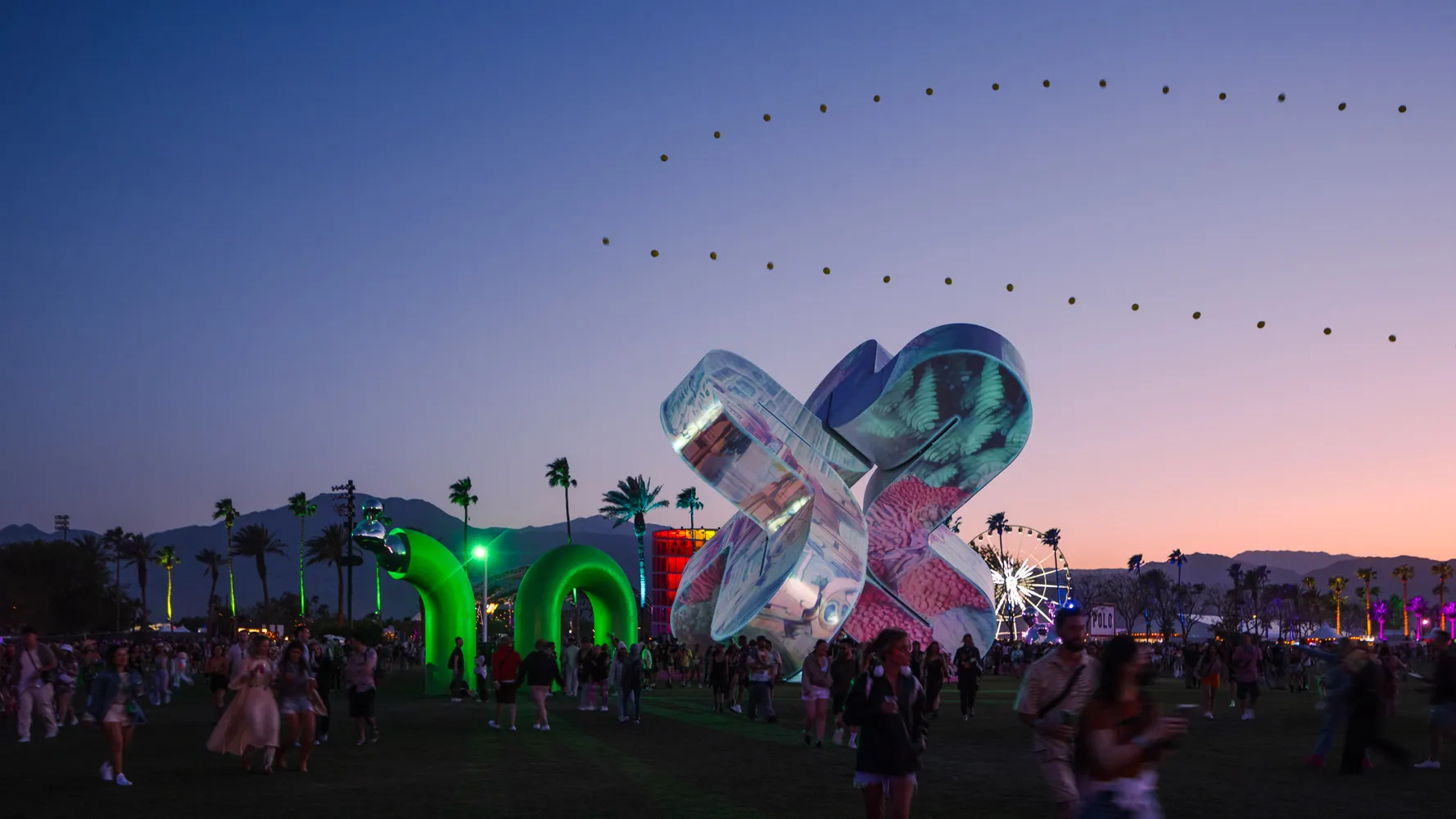
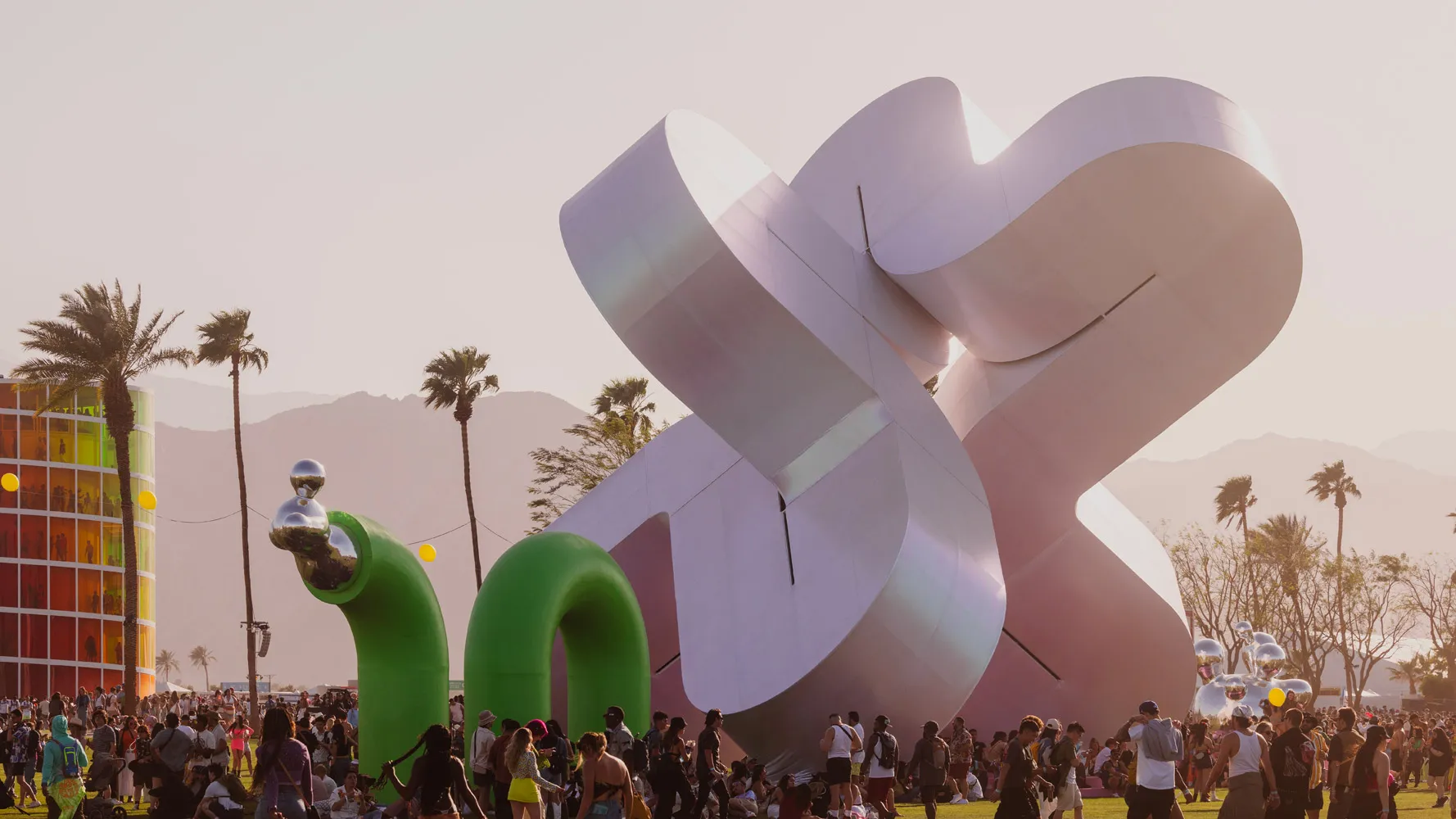

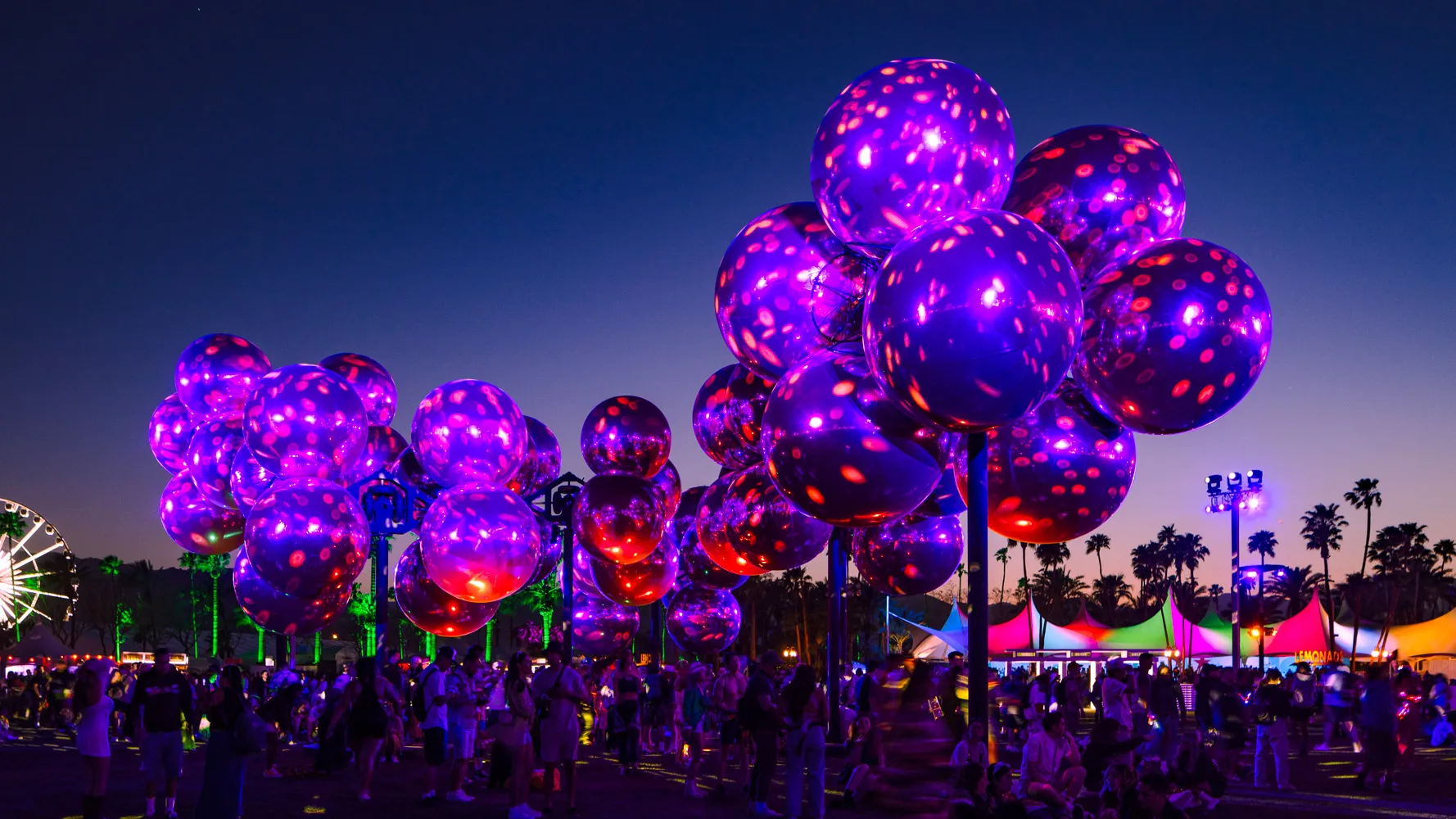
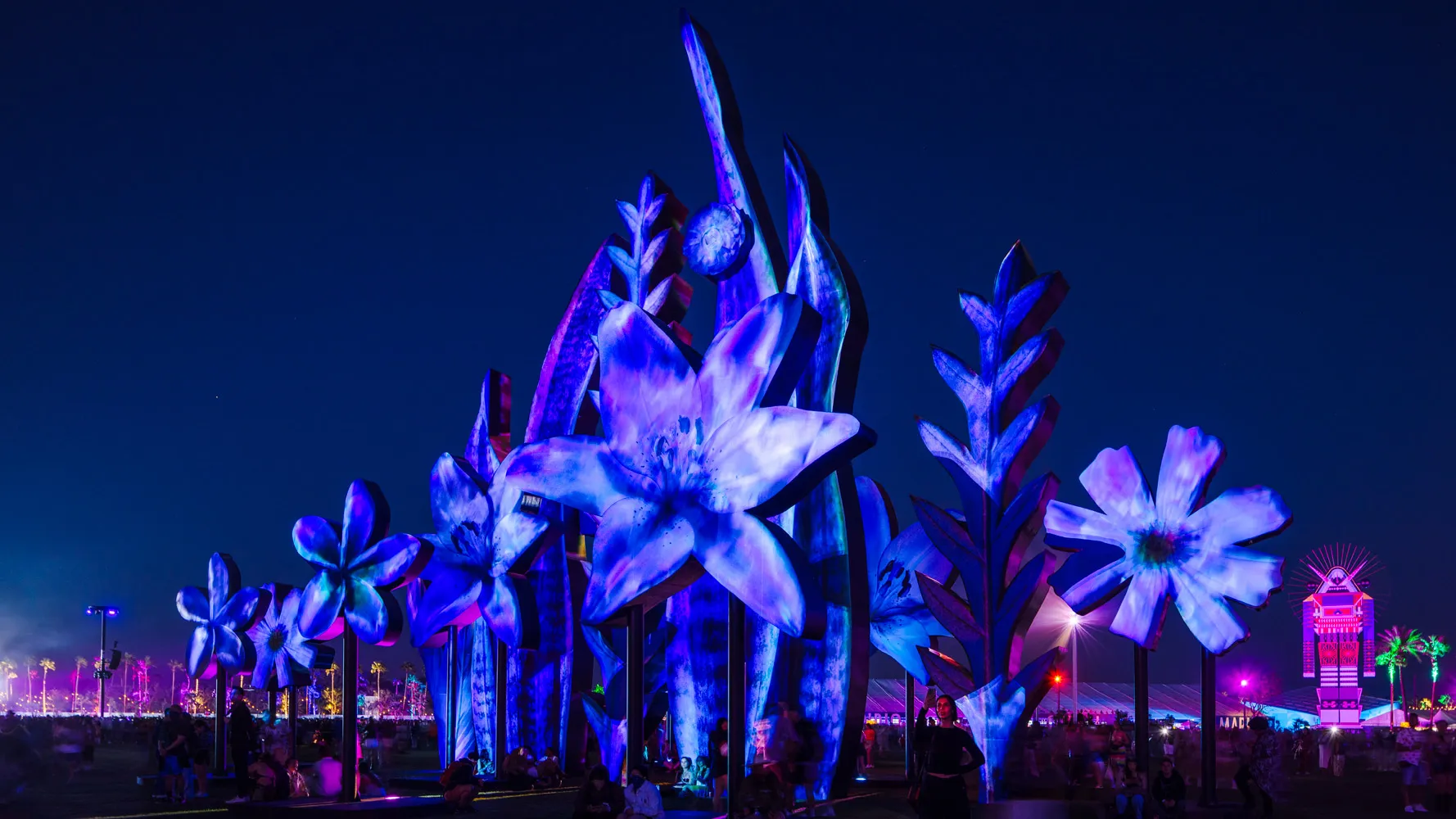
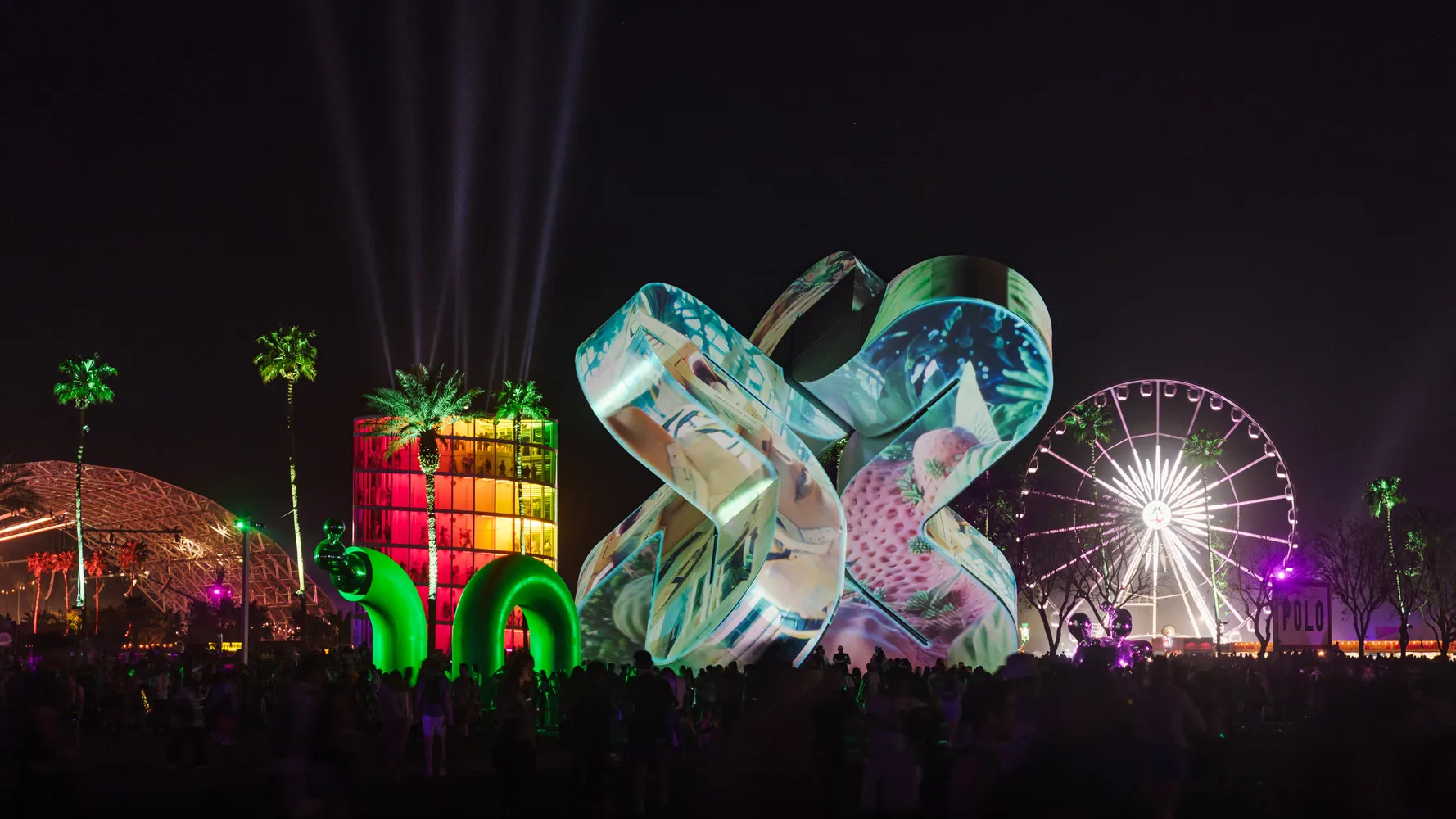







Large-scale, steel-wrought iridescent flowers in shades of teal, indigo, lavender, and magenta stand illuminated against a desert landscape; a holographic amorphous squiggle serves as a canvas for nighttime projections; three colossal figures rendered in repeating shapes and patterns resemble statuesque robots that tower above swarms of concertgoers. These are some of the designs unveiled last weekend in Indio, California, to kick off the 2023 Coachella Valley Music and Arts Festival.

Holoflux, detail. Photo by Lance Gerber, courtesy Coachella
Returning for a second consecutive year following a pandemic-induced lull, the festival will run for its second weekend, April 21-23, starting Friday. In addition to its usual spate of musicians and performers, this year’s roster features monumental ephemeral works from nine returning local and international artists, designers, and community-based collectives as well as four new names from around the world: Kumkum Fernando, Vincent Leroy, Güvenç Özel, and Maggie West.
“Our intention is to bring together artists, architects, and designers whose practices invite participation, inclusion, and transformation to create a multi-disciplinary and multi-cultural program that reflects our audience and the many performing artists,” said Coachella’s curatorial advisor Raffi Lehrer in a statement. “These installations act simultaneously as way-finding markers, points of congregation, and accessible entry points for all show-goers to experience art.”

Maggie West's Eden, detail. Photo by Lance Gerber, courtesy Coachella
Roughly 25 miles southeast of Palm Springs, the fevtial’s birthplace was founded in 1876 as a railroad pitstop between Arizona and Los Angeles. However, Indio quickly evolved into a hub for agriculture, and became the first incorporated city in Riverside County’s Coachella Valley. With roughly 90,000 residents, the area—coined “The City of Festivals”—sees an influx of nearly 1.4 million annual visitors for events like Stagecoach Country Music Festival and, of course, Coachella (an agreement reportedly extended through 2050, according to the Palm Springs Desert Sun). Correspondingly, the festival has offered increasingly robust interactive design offerings.
The year’s lineup of 13 designers has dreamed up a range of both new and recurring behemoth sculptures and immersive interventions that transform—depending on time of day, angle, and perspective—the palm tree–peppered, mountain-bordered grounds of the Empire Polo Club.
The Messengers by Kumkum Fernando
The Sri Lankan artist, currently based in Vietnam, draws inspiration from Tibetan and Hindu architecture as well as folklore from his youth, pulling themes from his travels into his sculpture practice. A commingling of fine art and design that evokes traditional forms, Fernando’s brightly colored totemic “icons” conjure up life-size action figures, standing atop plinths at heights that range from 65 to 80 feet. Each is accompanied by a poem. “I have a library that I go through at different points in time. When I put them together, I often see unexpected things,” says Fernando. “I made a series of work completely out of window grills, another series from patterns from Persian rugs, and another from temple patterns. One day, I was arranging objects, and they appeared to form a figure. Then I thought I should make figures with these patterns.”

1

2

3

4
Kumkum Fernando, The Messengers. Photo by Lance Gerber, courtesy Coachella.
Molecular Cloud by Vincent Leroy
Raised in rural Normandy and trained in industrial design, the Paris-based artist constructs kinetic structures at the intersection of the natural and the artificial—as seen in the virtual world—and often experiments with light, superimposition, and imagined spaces rendered in the digital age. Reflective fuchsia orbs coalesce to form Leroy’s shifting Molecular Clouds. The mobile mass toys with perception, appearing to float above the festival field. With an emphasis on movement that highlights a slower rhythm, the French artist proposes an opposition to today’s increasing reliance on speed and efficiency. Leroy’s voluminous projects, which have been installed around the world, aim to do just that; his portfolio has been exhibited in international museums, galleries, and fairs, and he has collaborated with brands that include Hermès, Nike, and Saint Laurent.

5

6
Vincent Leroy, Molecular Cloud. Photos by Lance Gerber, courtesy Coachella
Holoflux by Güvenç Özel
The Turkish-born, L.A.–based interdisciplinary multihyphenate, founder of Ozel Office, and UCLA lecturer describes himself as a cyber-physical architect and a critical technologist. “Cyber-physical meaning the work covers cyberspace and physical environments and the interaction between the two,” he explains. “Critical technologist, meaning engaging with new technological tools.” Özel focuses on large-format robotic sculptures, VR installations, and machine learning in architecture; he has worked with the offices of Frank Gehry and Rafael Viñoly among others. (His intervention at the Venice Architecture Biennale in 2014 was the first architectural application of Augmented Reality, and his 2020 Sundance film Persuasion Machines investigates the impact of surveillance capitalism.) After nightfall, Holoflux, which resembles a sinuous upholstered plus sign, becomes a luminous backdrop for graphics and real-time video projections.

7

8
Güvenç Özel, Holoflux. Photo by Lance Gerber, courtesy Coachella
Eden by Maggie West
The L.A.–based, North Carolina–born NFT artist composes vibrant photographic, video, and timelapse pieces that incorporate flora and seek a balance between documentary and fantasy. Lit with either warm or cool tones depending on the side, Eden–reportedly one of the world’s largest 3-D photography installations–etches West’s high-resolution floral photography onto vinyl sheets that cover 20 wood-clad steel forms that stretch up to 56 feet. At night, the structure is illuminated with mapped projections. “By photographing familiar objects with multicolored lights, my work helps viewers look closer at some of the nature they might take for granted—like the texture of the snake plants and the stamens in the centers of the lilies,” she says. The artist’s previous commissions include projects for Netflix, Google, Art Basel Miami, and The Standard Hotels.

9

10
Maggie West, Eden. Photos by Lance Gerber, courtesy Coachella
A series of familiar faces and forms that have become emblematic of the festival also returns this year: Robert Bose, New York–based artist and mastermind of the quarter mile–long Balloon Chain; NEWSUBSTANCE, the UK-based firm behind the seven-story spiraling pavilion, Spectra; Do LaB’s latest iteration of the Warrior One stage; and the 10-ton steel horse, Mustang, by Santa Fe sculptor Don Kennell.

Kumkum Fernando, The Messengers. Photo by Lance Gerber, courtesy Coachella
Led by educator Marnie L. Navarro, local arts and culture nonprofit Raices Cultura has again recruited local students to install thematic artworks at the festival campground. Coachella Art Studio, the 5,000-square-foot immersive experience founded in 2008 and produced by Sarah Scheideman in collaboration with Coachella Valley artist Sofía Enriquez, once again facilitates inclusive and communal creative expression using sustainably sourced clothing and clay. In years past, 2022 Pritzker Prize laureate Diébédo Francis Kéré also presented Sarbalé Ke, 12 kaleidoscopic towers inspired by Burkina Faso’s baobab tree.
“Surprise encounters with these outsized projects in the middle of the valley, surrounded by music and the collective energy of the crowd has become a much-anticipated shared experience,” says the festival’s art program manager Paul Clemente. “Some of these works have been woven into the archetypal imagery of Coachella.”

Molecular Cloud, detail. Photo by Lance Gerber, courtesy Coachella


